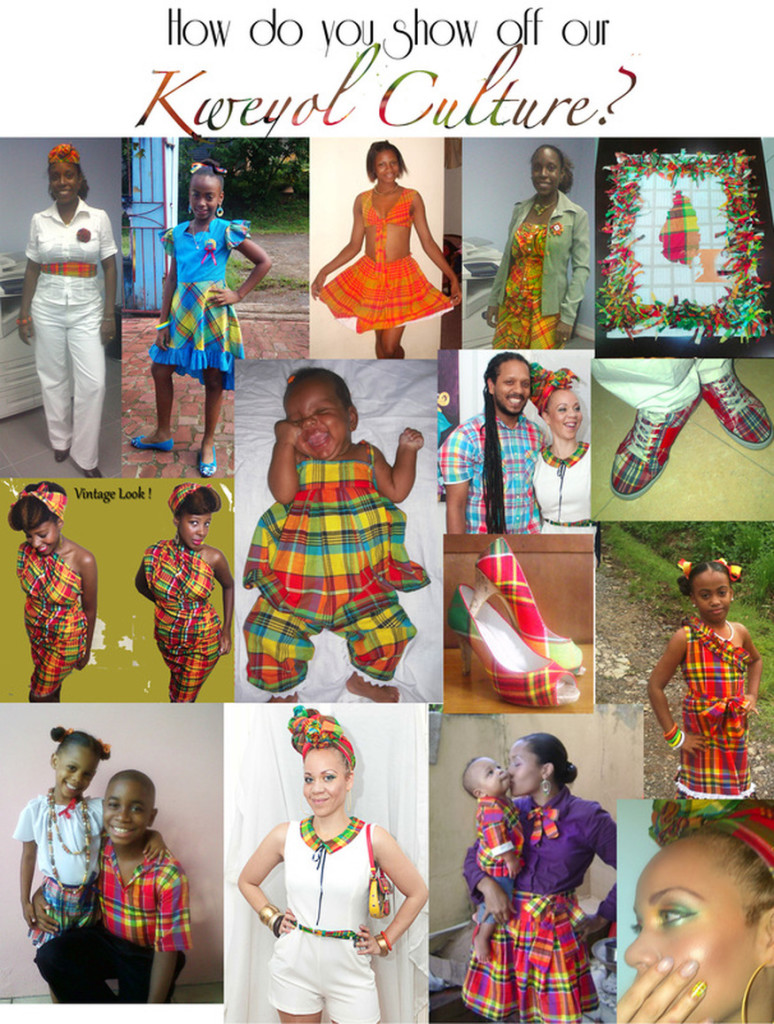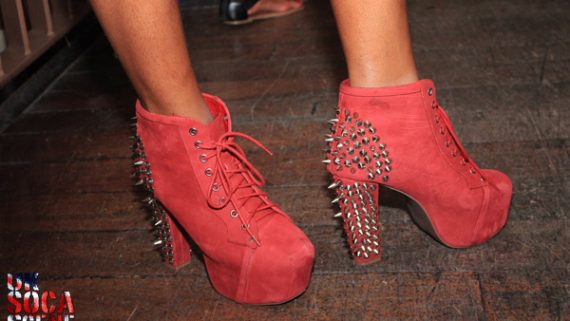History of Traditional Dress in the Caribbean
Through time, evolution and tremendous growth in culture and technology, the layers of colonialism have moulted away, paving way for old and new fashion designers. Noticeably the fashion footprint has been steadily growing and through shows like Project Runaway, we have seen designer’s such as Anya Ayoung capture the world stage and travel as far as Africa, showcasing her aesthetic gifts and giving the southern hemisphere a taste of T&T.
It is however noted through research, that it is not now, in the midst of living in a digital world and the 21st century that the world has only realised that Caribbean fashion does actually exist. I can remember the whirring of a Singer machine, droning in the background, with occasional bursts of silence brought on by something catching on the needle. It was in knowing the natural skill that my aunt possessed in dress making, that inspired a 16-year old to tear a page out of a Word Up magazine and challenge the dressmaker to mimic the dress on that page. Without any patterns and using the old fashioned method of drawing out a pattern on body using often at times newspaper, my Toni Braxton, inspired slit prom dress, with delicate hand sewn beading and netting was born. At the highlight of beauty pageants and a time, when Caribbean models were sweeping the stages with Miss World and Universe crowns, it was notably their gowns of choice that drew attention to the world centre stage. Back home, it was the respected tailors, seamstresses and dressmakers who had created and designed those elaborate pieces of couture.
**********************************
Via the slave trade, the Caribbean adopted many aspects of the African, European and Indian culture, forming an exceptional combination of traditions. France and Scotland played a big part in defining early fashion, India gave their indigenous cloth while West Africa lent its head wrapping fashion technique.
In the 17th century the first dress was the uniform of the estate afforded to those working and resident on plantation farms. Drab in appearance, three yards of either brown, grey or blue were worn as a wrap-around becoming a tunic with three holes catered for the head and arms. As a belt, a length of rope was tied around. To protect them from the harsh sun that ferociously beat down and for comfort, plantation slaves wore wide brimmed straw hats and a head scarf while the house slaves tied a piece of cloth around their heads. Over time inspired by their combined traditions, dress evolved into saris and wraps, over emphasised by the French bourgeoisie way of dressing.
From the southern pristine beaches of France surrounded by balmy weather, the upper class’s fashion consisted mainly of ‘madras cloth’ a lightweight fabric imported from India. What came from a wealthy bourgeoisie became an integral part of Caribbean fashion. It was during the holidays and Sundays that slaves were given freedom to dress in whatever they wanted. Through the proceeds gained from their work, they purchased the colourful madras cloth, inspired by the tartan mortif designing the French creole style dress.
The first creole dress consisted of a floor length skirt of madras cloth worn over a white cotton chemise, trimmed at the neck with lace adorning the hem, sleeves and neck. Ribbon was threaded through the lace and chemise while foulards were created from pliable material. Using heavily starched lacy ribboned petticoats, propelled the West African tradition of lifting the skirt and flinging it carelessly over one arm making it a fashion statement, an action still witnessed today in cultural dances. A coloured cotton triangle sometimes white was draped over the bosom completing the French way of dressing.
Creole dress still remains popular now and plays an important part as a national dress in the French creole speaking Caribbean islands more especially St Lucia and Dominica. In St Lucia the ‘madras’ sometimes called a ‘Jip’ consists of five piece ensemble with the style taken from the grand french robes known as ‘Wob Dwiyet’ in french creole. Named after the Saint Lucian festival celebrating Creole culture; ‘Jounen Kwéyòl’, the ‘jip’ has taken on a new ‘Kwéyòl’ style inspiring young emerging local designers (Jaeylu), amongst a few to design their own unique inspired fashion, infusing modern with old.
Image collage courtesy of Fiona Compton Photography and iamstlucian.com.
Considered a significant part of Dominica’s colonial heritage the ‘Wob Dwiyet’ is the national costume and symbol of the country, inspiring pageant competitions during independence celebration times. Known as quadrille in Jamaica and Haiti the ‘madras’ is often worn as part of a folk dance costume.
African influence is still visible across the Caribbean and can be seen through movements such as Rastafarian, where the wrapping of head ties is still part and parcel of the dress, often playing an important part in defining Rastas. In addition head ties are often worn on women practicing religions such as Jonkonnu, Oriesha and Kumina.
 Throughout carnivals around the world we have seen the heavy use of feathers. Feathers were frequently used by Africans on masks and headdresses as a symbol of their ability as humans to rise above problems, pains, illness and also a way of travelling to another world to be reborn and to grow spiritually. Today these feathers adorn the backs of many masqueraders, playing an important part in the costume making process.
Throughout carnivals around the world we have seen the heavy use of feathers. Feathers were frequently used by Africans on masks and headdresses as a symbol of their ability as humans to rise above problems, pains, illness and also a way of travelling to another world to be reborn and to grow spiritually. Today these feathers adorn the backs of many masqueraders, playing an important part in the costume making process.
We travel south to the islands of Trinidad & Tobago, where a significant Indian culture has contributed to the fashion as well. Often Caribbean men and women can be seen wearing elaborately beautiful rich designs such as the shalwar, sari, and lehenga. Accessorising through jewellery such as bangles, sirbandi, and anklets is also common and popular.
Called a ‘shirt jac’ in T&T, in Jamaica there is a very traditional shirt that most men still wear called the ‘Guyabera’. This shirt came about as a poor woman was stitching large pockets all over her husband’s shirt so that he could carry guavas. The white Guyabera worn with a black bowtie is considered equivalent to the tuxedo in terms of formality. In addition to the formal wear, designed in the 70s, a two-piece suit for men in Jamaica was worn on business and formal occasions as a Caribbean replacement for the European style suit and similar to the safari suit often commonly seen in Africa.
Expressing an identity through costume, we know that Caribbean fashion is heavily steeped in culture and in some islands remains an important element of their history. However through the emergence of urban popularity and pop mass culture, we have seen fashion change allowing the younger generation and new breed of designers to portray their own unique awareness of style, mixed with their redefined scope of their culture and roots.
Reflecting whilst still soaring on the soca future riddim…Caribbean fashion is about freedom and a sense of liberation from the worldly woes that prey on humankind.






Wow